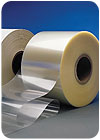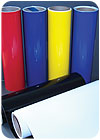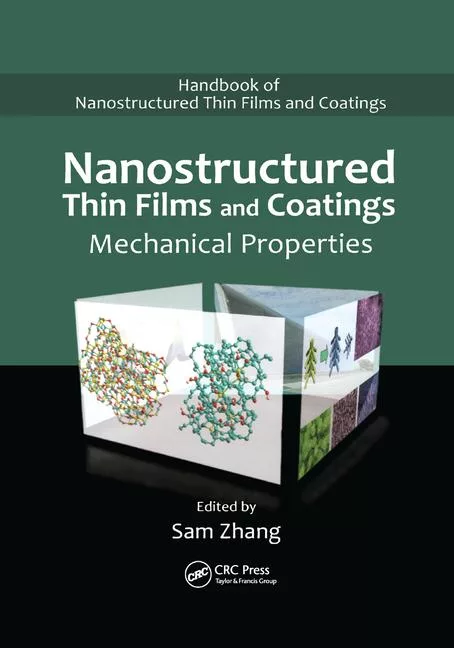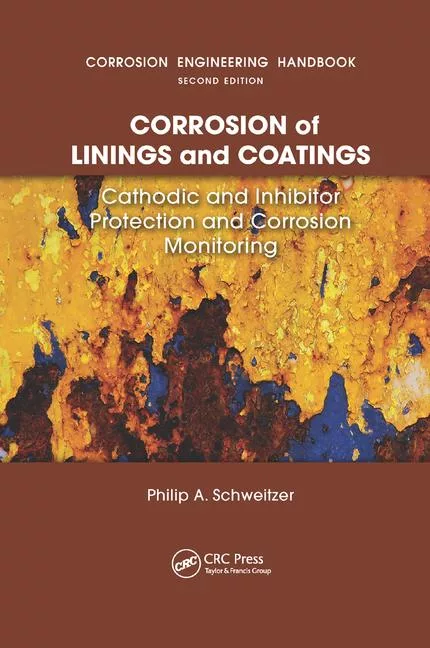The Challenge of Substrate Selection for Label Stocks and Protective Films

Photo courtesy of FLEXcon
Many factors must be considered when selecting the best substrate for a printed label or graphic, or a non-print application such as a protective overlaminate, including die cutting and durability requirements, as well as the necessary level of conformability and dimensional stability. Other characteristics, such as gloss, clarity and cost, can also drive substrate selection. Often, the choice of substrate dictates an application’s ultimate success.
First, you should start with your application’s performance requirements. Is the surface curved or flat? Will the product spend most of its life inside or outside? How about exposure to chemicals, moisture and temperature extremes? Must the product survive repeated deformation or flexing? These represent some of the considerations when choosing a substrate.
Many of today’s more demanding applications require film (rather than paper) substrates, due to film’s superior durability - including moisture, abrasion, and weathering resistance. This advantage makes film the preferred substrate for such printed applications as durable-product labels and outdoor graphic advertising. In the non-printing arena, film is often used as a protective, abrasion-resistant masking material for painted surfaces and for durable overlaminates providing UV protection and barrier properties.
Films are increasingly being evaluated for applications in the transportation industries, as well as aerospace and maritime applications where specific film properties provide the environmental resistance required to increase service life of composite structures.
Composite films can be post-applied through adhesive bonding to structures to deliver new levels of environmental and corrosion resistance, gas and vapor transmission control, and abrasion and graffiti resistance. This approach can deliver better performance than standard single-component painting and finishing processes.
Even after deciding on film for a label or protective application, more decisions must still be made. To help with those choices, this article will examine the key attributes of film substrates and the advantages and disadvantages of some of the more popular film types.
Substrate Properties
Some of the critical properties measured for film substrates are gloss, color, haze/optical density, tensile and elongation, tear initiation, and handle. While many of these properties sound familiar, some merit additional explanation.Tensile strength, measured in pounds per square inch (PSI), indicates the force required to pull the film apart at a constant speed. Elongation is measured at the same time as tensile strength, and indicates the film’s ability to stretch without breaking. For example, 100% elongation means the film stretched to twice its original length before breaking.
Tear initiation measures the force required to start tearing the film. Haze tells us about film clarity for clear films. The lower the haze number percentage, the closer the film is to “glass clear.” For white and colored films, opacity, or optical density, is measured. Here, higher numbers indicate lower light transmission through the film.
Handle shows the flexibility of the film. A higher handle value means a stiffer film and less ability to conform to curved surfaces.
How Films are Processed
Most films start out as hot plastic, and all end up as wide rolls of thin film. What happens in between varies dramatically by film type and by which film properties are desired.Some films are simply cast from solvent onto a release sheet and dried like an adhesive. The casting process usually produces an extremely flexible and soft (low-handle) film with high elongation. Other films are extruded onto a cooled casting drum and undergo little other processing prior to being wound into a roll. These extruded films are sometimes referred to as “cast” and exhibit similar properties.
Other films are extruded onto a casting drum and then stretched in web direction (mono-axially oriented), and often in cross-web direction as well (bi-axially oriented). These oriented films often have a higher handle and higher tensile strength than cast films, and have lower elongation. Finally, some films are extruded into a calender stack and rolled out like dough. The calendering process usually produces a film with handle and elongation between those of oriented and cast films.
Another method involves blowing the film. When produced in this manner, the film is stretched out, creating an oriented substrate. This process produces a film that offers clarity, dimensional stability and stiffness, which can be an asset in terms of dispensability.
Choosing the Best Film Type for Your Application
How can you determine the best film substrate for your application? Following is a guide to the key attributes of some of the most popular films, including their advantages, disadvantages and most common applications.Polyester (PET)
This bi-axially-oriented film is usually available in gauges ranging from 0.5 mil to 10 mil. PET is most often available in clear, clear matte and white. By vacuum-depositing aluminum on the clear or clear matte films, silver and silver matte versions can be manufactured as well.
PET is dimensionally stable at high temperatures, and offers durability in the form of excellent initial tear and puncture resistance. It provides good thermal and chemical resistance as well. PET is also available topcoated or print-treated to enhance printability.
Produced to very high standards, polyester is an extremely smooth substrate that lends itself well to applications that require good adhesive wetout. PET is often used as the carrier film in a double-coated adhesive product. In addition, PET offers an even caliper across the web. Polyester also retains good optical clarity over a range of temperatures, making it an ideal choice as an overlaminating film. A non-reactive substrate, polyester bonds well with many inks, coatings and adhesives.
Polyester withstands many outdoor stresses, such as temperature extremes, environmental conditions and exposure to moisture. This means that PET labels will remain legible and intact for the life of the product. These characteristics make polyester an ideal choice for material tracking labels, as well as compliance, product identification and safety/hazard/instructional labeling for durable goods. It can also be used for two-way window decals inside of storefront windows.
Vinyl (PVC)
Vinyl usually comes in 3-12 mil gauges, and offers a great degree of conformability and flexibility, making it ideal for applications involving compound curves. An extremely malleable film, vinyl can be easily embossed to create a unique texture. Vinyl is also easy to print.
Vinyl is generally very weatherable, offering good resistance to UV light and exposure to other environmental conditions. Vinyl is, therefore, often used for outdoor applications. However, temperature extremes can pose a challenge for vinyl, which becomes brittle at extremely low temperatures and soft at extremely high temperatures.
Vinyl is favored for exterior applications where durability is key. Cast vinyls are most commonly used for fleet graphics, but calendered vinyls are growing in popularity for this application. Calendered vinyls are ideal for product identification and safety/hazard/instructional labeling for durable goods. These types of vinyl can also be used for indoor applications, such as retail promotional graphics (including point-of-purchase displays and floor/carpet advertising); holiday/seasonal and novelty stickers and bumper stickers; and college, alumni, and association decals. Vinyl can be perforated to create one-way vision transit advertising and window-graphic applications. A reliable and durable substrate, vinyl is also a popular choice for wall murals and billboards.
Polypropylene (PP)
Polypropylene is typically available in gauges ranging from 1 mil to 10 mil, and is usually produced in a clear, clear matte, white or silver (metalized). Like polyester, polypropylene is typically a bi-axially oriented film. This orientation gives polypropylene very good tear initiation resistance. Polypropylene also exhibits excellent chemical resistance, and can withstand exposure to a variety of container contents.
Polypropylene is produced in substantial volume for non-pressure-sensitive applications in the snack-food industry, such as bags, wraps, and other flexible packaging. The high-volume production of polypropylene makes it a very economical film. This economy of scale has helped drive the success of this substrate in the pressure-sensitive label market, especially as an alternative to paper labels.
Polypropylene can be topcoated and surface treated to enhance its printability. This has helped make it a popular choice for primary and secondary labeling applications requiring the no-label look, such as with applications in the food and beverage (particularly glass bottle), personal care, household chemical, and pharmaceutical markets. It is well suited for semi-squeeze and rigid containers. PP is primarily recommended for interior applications.
Polyethylene (PE)
Available primarily in clear, clear matte and white matte (but also available in a metalized look), polyethylene comes in gauges ranging from 2 mil to 4 mil. PE features excellent chemical resistance, and can withstand exposure to container contents. It is often produced by either being blown or cast extruded. The blown version is stiff, while the cast PE is a non-oriented, flexible substrate ideal for applications that require extreme deformability or squeezability.
High-density polyethylene is usually very durable, featuring excellent stiffness and moderate elongation. This makes it relatively easy to dispense, but it tends to have more gel and imperfections than the medium-density version. These imperfections can lead to printing challenges. However, suppliers are now offering many medium-density/high-density blends to achieve the best of both worlds. There is also substantial research into metallocene technology, which involves the manipulation of the polymers in different configurations and shapes to produce stronger, clearer polyethylene films.
High-density polyethylene is a popular choice for household-chemical and personal-care package decoration, including rigid, semi-squeeze, and full-squeeze containers.

Photo courtesy of FLEXcon
Specialty Films
Other high-performance films are also available, offering premium characteristics. These films can offer an enhanced level of performance to meet specific needs.Polycarbonate
Available in gauges ranging from 3 mil to 15 mil, polycarbonate is a durable film. It is dimensionally stable, and typically offered with a clear velvet embossed surface, providing excellent scratch resistance.
Typical uses include graphic overlays on membrane switches, as well as backlit signage where one side of the sign is exposed to UV light and the other is exposed to elevated heat due to the interior lighting. It is also ideal for applications that require repeated actuations or constant usage.
Instrument panels and dial gauges often use thicker sheets of polycarbonate. In these cases, the graphics are often subsurface printed and a transfer tape is then used to mount the graphic to the application surface.
Acrylic
Clear and white acrylic substrates are available in 1.5 mil and 2 mil versions. Acrylic offers UV resistance, as well as excellent outdoor durability. It features good tensile strength, and is often relatively rigid. The clear version is often used as an overlaminate. Both clear and white can be used for outdoor signage applications.
Other Films
Specialty films, such as Tedlar*, Tyvek*, Kapton* and Ultem**, are sometimes used for specialty applications. Tedlar (PVF) comes in 1-, 1.5- and 2-mil versions. It offers an enhanced level of chemical, electrical and environmental resistance compared with vinyl, and features anti-graffiti characteristics as a key feature. Tedlar can be topcoated or print treated to enhance its printability, but is often left untreated so that it is easily cleanable. Available as a white, custom-colored or transparent substrate, Tedlar is also used as a premium overlaminate, providing excellent UV-blocking characteristics. Availability of this product continues to be an issue.
Tyvek (spun-bound PE) features a coarse surface, excellent dimensional stability, and tear resistant characteristics. Another specialty film, Kapton, is available as a 1- or 2-mil white or yellow substrate, and offers unparalleled heat resistance. Kapton is a dimensionally stable substrate, and features excellent physical, electrical and mechanical properties. It is an ideal choice for barcode labeling on printed circuit boards, due in part to its ability to withstand the temperatures in the wave-solder process.
Ultem, a white polyetherimide film, features excellent heat resistance, flame retardance and tear strength, and is a solid choice for many high-temperature labeling applications. This film is a key component of FLEXcon’s 2.0 mil white THERMLfilm® UT product.
Laminations
Laminations, which combine the characteristics of two or more substrates, are also available. For example, a polyester/vinyl laminate offers the durability of polyester and the conformability of vinyl. They can be used for applications where a thicker substrate is required.
Making the Right Choice
Choosing the right substrate for your application involves understanding converting and end-use requirements. The success of the application hinges on understanding these factors and then matching a product to those needs.Given the wide selection of available substrates, look for a pressure-sensitive film supplier who is committed to finding the right products for your applications and who can create a custom solution (film, adhesive, topcoat, release liner) if your application is unique.
For more information, visit www.flexcon.com.
* Tedlar, Tyvek, and Kapton are registered trademarks of E.I. DuPont Co.
** Ultem is a trademark of SABIC Innovative Plastics IP PV.
Links
Looking for a reprint of this article?
From high-res PDFs to custom plaques, order your copy today!





